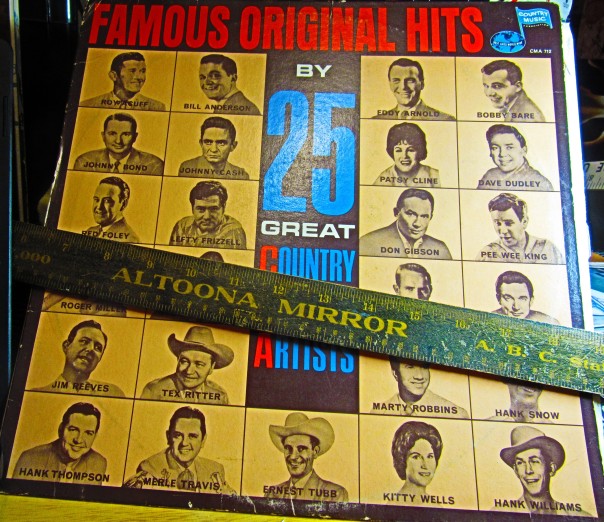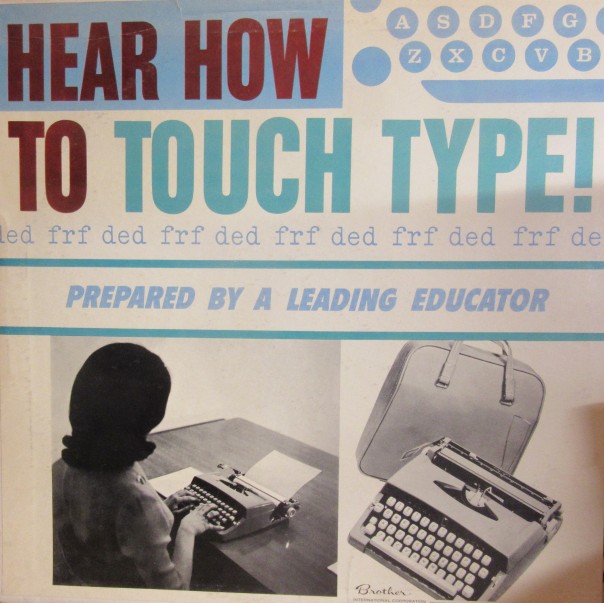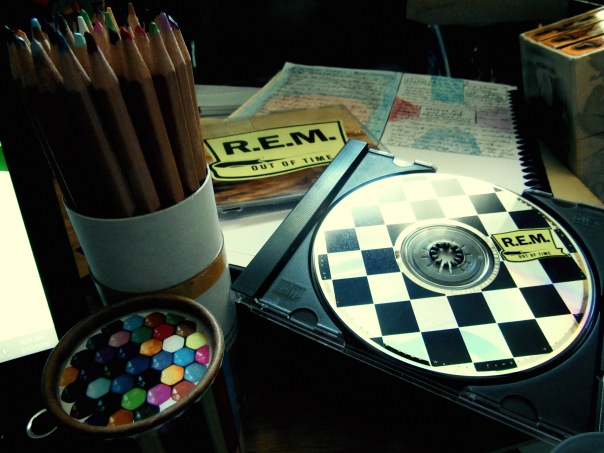
This is not exactly an Easter message, though I am writing it very early on Easter morning, while listening to what has got to be one of the greatest collections of classic country music ever assembled, released at a time when the songs were still new.
I’m no preacher, so it’s not for me to say what Easter means to anybody. I can’t even claim to be “spiritual but not religious” at this point. I am just a guy who is, to paraphrase my grandmother, “middle-aged and dumb and tryin’ to get along.” In her phraseology, it was “young and dumb and tryin’ to get along,” but the tufts of gray hair I leave behind after every visit to Hair Cuttery have thoroughly convinced me of my middle age. And I’m actually cool with that.
This is, however, sort of a follow-up report on my Lenten season.
Back when I was a Catholic grade school kid, a huge component of Lent was “giving something up.” There were reasons for this giving up of course, though I honestly don’t remember the degree to which I understood these reasons. All I knew is that no matter what I tried to give up, my Lenten resolutions were doomed to fail, sometimes even before the ash on my forehead had completely disappeared.
My giving-things-up-for-Lent track record is abysmal. At least until this year.
I did not exactly attempt to give something up over the past 40 days. However, it was around the beginning of the holy season that I made a decision to ease up on dread and fear. And anger. And despair. And panic. And deep existential angst. Etc.
I didn’t do this for Jesus. I did it to preserve my sanity. That sounds a tad overdramatic and it probably is, but there is truth to it.
I can’t candy coat it, so I’ll just say it, in the same way I said it several blog entries ago: my life has been challenging in recent years, for many reasons. This is no way makes me unique. My response to the challenges — fear, anger, dread, panic, a gradual withering of my sense of humor — hasn’t exactly been unique either. This is all part of the human condition and I am about as human as possible.
Not unlike Taylor Swift, I’m not convinced that I’m out of the woods yet. In fact, I know I’m not. The challenges remain and they’re still big and scary. But earlier in the year, I did make the decision to at least try to combat the despair, anger, dread, panic, etc. The only weapon I could muster for this task was to take a lighter approach to it all. I was going to stop worrying about not being the Very Best and instead begin to work positively toward the Somewhat Better.
Not coincidentally, this change in approach coincided with the revival of this blog. I’ve posted here at least once a week since I decided to break out of the loop in which I’d been stuck. I’ve always known that writing — whether I’m writing about these issues or about some interesting person now buried at Laurel Hill Cemetery or about my own nerdish tendencies — has been a touchstone of my mental health. When I’m writing regularly, I’m happier and better able to deal with life. This is simply how I’m wired.
The turning point was find the time, amidst the dread and the panic, to write. To actually do the thing — or, at least one of the primary things — that keeps me sane.
I am grateful to have this outlet. And, if you’ve been following this blog in recent weeks, or just stumbling on the occasional entry, I am grateful to you as well! Your time is your most precious commodity and I truly appreciate the time you spend with the words I bang out here.










 It was 25 years ago — March 12, 1991 — that R.E.M. released Out of Time, their seventh full-length studio album. It proved to be a career-changing release for the band. Not only that, Out of Time became the soundtrack to a pivotal time in my own life. This was true of R.E.M. albums before and after Out of Time but probably never more so than it was with Out of Time.
It was 25 years ago — March 12, 1991 — that R.E.M. released Out of Time, their seventh full-length studio album. It proved to be a career-changing release for the band. Not only that, Out of Time became the soundtrack to a pivotal time in my own life. This was true of R.E.M. albums before and after Out of Time but probably never more so than it was with Out of Time.
